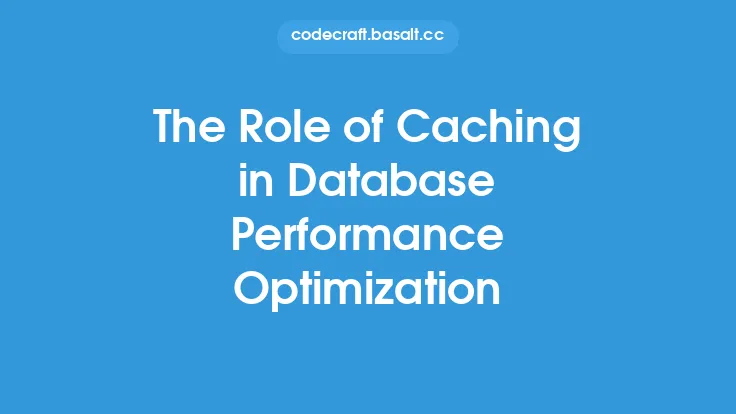Database systems are the backbone of modern computing, providing a way to store, manage, and retrieve large amounts of data. At the heart of these systems is the query, a request for specific data or information. However, as databases grow in size and complexity, queries can become slower and more resource-intensive, leading to decreased performance and increased costs. This is where query optimization comes in, a crucial process that ensures queries are executed efficiently and effectively.
Introduction to Query Optimization
Query optimization is the process of analyzing and improving the performance of database queries. It involves identifying the most efficient way to execute a query, taking into account factors such as the database schema, indexing, statistics, and system resources. The goal of query optimization is to minimize the time and resources required to execute a query, while also ensuring that the results are accurate and complete. Query optimization is a complex process that requires a deep understanding of database systems, query languages, and optimization techniques.
The Query Optimization Process
The query optimization process typically involves several steps, including parsing, analysis, optimization, and execution. During the parsing step, the query is broken down into its component parts, such as keywords, operators, and identifiers. The analysis step involves checking the query for syntax errors and ensuring that it is semantically correct. The optimization step is where the query is transformed into an efficient execution plan, taking into account factors such as indexing, caching, and join ordering. Finally, the execution step involves executing the optimized query and returning the results to the user.
Query Optimization Techniques
There are several query optimization techniques that can be used to improve the performance of database queries. One of the most common techniques is indexing, which involves creating a data structure that allows the database to quickly locate specific data. Another technique is caching, which involves storing frequently accessed data in memory to reduce the time required to retrieve it. Join ordering is also an important technique, as it involves determining the most efficient order in which to join tables together. Other techniques include query rewriting, which involves transforming a query into a more efficient form, and statistics gathering, which involves collecting information about the data distribution and query patterns.
The Role of the Query Optimizer
The query optimizer is a critical component of the database system, responsible for analyzing and optimizing queries. The query optimizer uses a combination of rules, statistics, and heuristics to determine the most efficient execution plan for a query. The query optimizer takes into account factors such as the database schema, indexing, and system resources, as well as the query itself, including the keywords, operators, and identifiers. The query optimizer is typically implemented as a separate component of the database system, and is responsible for generating an execution plan that can be executed by the database engine.
Challenges in Query Optimization
Query optimization is a complex and challenging process, requiring a deep understanding of database systems, query languages, and optimization techniques. One of the biggest challenges is dealing with the complexity of modern databases, which often involve large amounts of data, complex schemas, and multiple query languages. Another challenge is optimizing queries in real-time, as the database system must be able to analyze and optimize queries quickly and efficiently. Additionally, query optimization must take into account factors such as concurrency, security, and data integrity, which can add additional complexity to the optimization process.
Best Practices for Query Optimization
There are several best practices that can be followed to improve the performance of database queries. One of the most important is to use efficient query languages, such as SQL, which is designed to be optimized by the database system. Another best practice is to use indexing and caching to improve query performance, as these techniques can significantly reduce the time required to execute a query. Additionally, it is important to gather statistics about the data distribution and query patterns, as this information can be used to optimize queries and improve performance. Finally, it is important to regularly monitor and analyze query performance, as this can help identify areas for improvement and optimize queries in real-time.
Future Directions in Query Optimization
Query optimization is a rapidly evolving field, with new techniques and technologies being developed all the time. One of the most exciting areas of research is in the use of artificial intelligence and machine learning to optimize queries. These techniques can be used to analyze query patterns and optimize queries in real-time, taking into account factors such as data distribution, system resources, and user behavior. Another area of research is in the development of new query languages and optimization techniques, such as column-store indexing and parallel query execution. As database systems continue to grow in size and complexity, query optimization will play an increasingly important role in ensuring that queries are executed efficiently and effectively.





